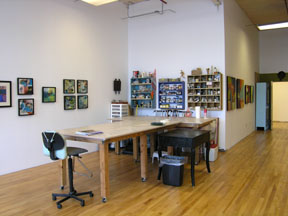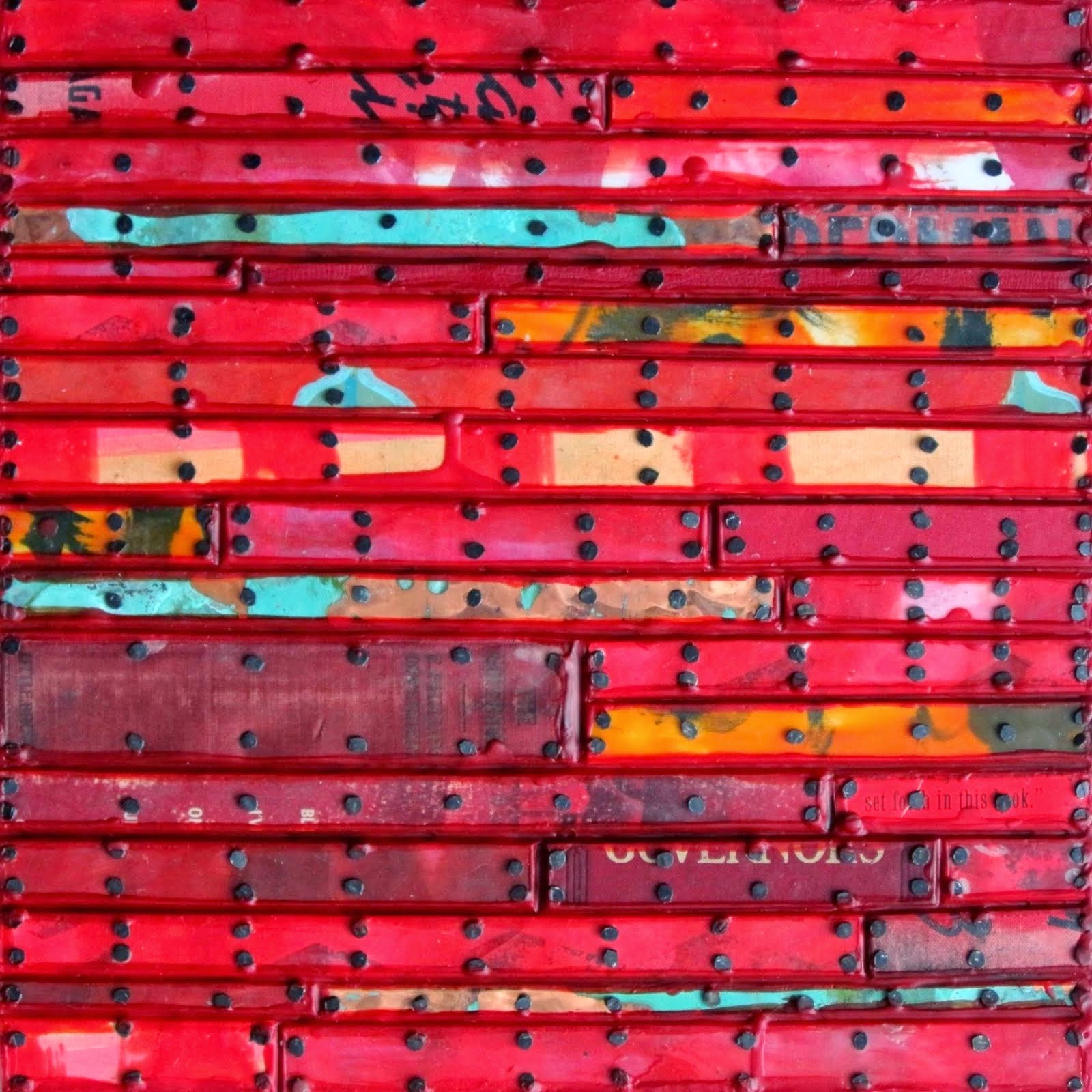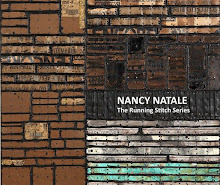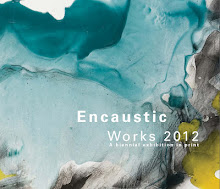I always have one or more books in the process of being read. Yes, I was an English major (in my first undergrad college) so reading has always been a big part of my life. Now, instead of novels, I have pretty much settled on biographies as my oeuvre of choice. Last week I finished two of them:
Just Kids by Patti Smith and
The Passionate Collector:Eighty Years in the World of Art by Roy R. Neuberger. These probably qualify more as memoirs, but who's looking.
They seem a disparate pair of books and, in fact, they were. What both have in common is that they were not written by professional writers, although Patti Smith is known as a poet. Let's just say that brilliant use of language was not their strong suit in either case, although both write directly and convey their thoughts clearly. (Sorry to disagree with the consensus on Patti Smith's book, but I do.) The connection between these books is that both writers relate to art: in Neuberger's case, his relationship with the official world of art (artists, dealers, galleries, museums) during his intense life of collecting, in Smith's case, her own art making and that of companion Robert Mapplethorpe.
I would like to comment on both books, but will write separate posts about them. First: Mr. Neuberger.
 |
| Roy Neuberger at age 100 (from the Wall Street Journal blog) |
Roy Neuberger was a well-known art collector who died last December at the incredible age of 107. He was also a Wall Street financier who managed money until the age of 101, according to Bloomberg. I got the Neuberger book about art collecting because I wanted to know more about the mind of a collector. I already know art from the maker's side and I've read quite a few about the dealer's side, but what about the person who buys the stuff? What motivates them? I was especially curious to know if a Wall Street kingpin was just in it for the money.
Neuberger's book starts off with a very nice dedication that places the emphasis just where it ought to be:
This book is dedicated with great affection and respect to the extraordinary, original, passionate artists who have enriched my life beyond measure.
The Bio
Neuberger was born into a wealthy family but orphaned at age 12 and raised by an older sister in New York City. He dropped out of college after one semester and went to work in the home decorating department at B. Altman and Company. His co-workers there brought him to concerts and art galleries and advised him to study painting because of his aesthetic talent. Unfortunately for him, after a brief period of study, he decided that he had no ability for making art himself although he loved it.
 |
| Neuberger in 2003 at home in his six-room suite at the Pierre Hotel, NY with some of the works he collected. Just above his head is Arthur Dove's Holbrook's Bridge to the Northwest, 1938. |
At age 21 Neuberger used a modest inheritance to move to Paris for four years (where he also worked for a decorator) and study works of art at the Louvre, religiously visiting the museum three times every week. Later, after reading about the life of Van Gogh, he vowed to buy art in support of living artists. Fortunately for him, he had great talent for making money in the stock market. He founded Neuberger and Berman in 1939 and then invented the no-load mutual fund in 1950 (a low-fee mutual fund for middle class investors according to the WSJ). He did well through many cycles of boom and bust and generated plenty of money for his real passion, buying art - mostly directly from artists and galleries, not on the secondary market.
Neuberger says that his early self-education at the Louvre showed him that,
"Each time you return to a work of art, you observe different things about the composition, the draftsmanship, the placement of figures and objects, the relationship between colors. It is the confluence of all of these elements, and many others, that evokes an emotional response." In other words, he became a collector because of his passionate emotional connection to works of art, not because he wanted to make money from them.
 |
| Barber Shop by Edward Hopper, collected by Roy Neuberger in 1954 and one of the pieces most often requested for exhibition loans |
In addition to closely examining art, Neuberger also read art criticism, especially four volumes of Bernard Berenson. He also found an artistic mentor in Duncan Phillips, who showed his collection in The Phillips Gallery (later The Phillips Collection) in Washington, D.C. Phillips showed him that he could mix oeuvres, time periods, styles and American with European art (originally a big distinction).
 |
| Milton Avery, Three Friends, 1944 |
Color in painting was Neuberger's strongest love and Matisse was one of his favorites because of his use of color. Milton Avery, whom Neuberger calls "an American Matisse," was another favorite because of his strong color, simplified shapes and interesting compositions. Later Neuberger bought Avery's works in bulk, eventually owning more than 100 of Avery's works, which he either kept for his own collection or gave to museums. Neuberger thought both of these artists showed a French influence, an affinity Neuberger felt because of his years in Paris.
 |
| Milton Avery, Gaspe' Landscape, 1943. Neuberger bought this work from Avery during his first visit to Avery's home and studio in 1943. He loved this painting and kept it with him until the end of his life. |
Neuberger continued to buy the work of living American artists during the 1940s, '50s and '60s, often buying when the work was just a few months old and relying on his own judgment of the work before critics weighed in. Here is some of the history of his collection as outlined in his book:
1940-1945: Work by 24 artists including Alexander Calder, Ben Shahn, Max Weber, Jacob Lawrence, Marsden Hartley, Stuart Davis, Milton Avery
1946 Collecting Gap: The Neubergers bought a new country house in 1946 which limited the funds available for collecting.
1947-1949 : 12 more artists including
Lee Gatch, Adolph Gottlieb and John Marin.
1950s and 1960s: 170 artists including Jackson Pollock, Joseph Stella, Larry Rivers, Louise Nevelson, Georgia O'Keeffe, Helen Frankenthaler, Alfred Leslie, Morris Louis, David Smith.
 |
| Jackson Pollock, No. 8, 1949, bought by Neuberger in 1950 for $800 |
 |
| Marsden Hartley, Fishermen's Last Supper, 1940-41, purchased by Neuberger in 1943, and kept in his personal home collection |
The Kind of Collector an Artist Loves to Have
Roy Neuberger calls himself a gregarious man and he not only enjoyed supporting artists by purchasing their work but also getting to know them. He was great friends with Milton and Sally Avery, with Alexander Calder (whom he calls "the most charming man in America"), David Smith, Max Weber, Jack Levine and Ben Shahn. For his 50th birthday, Neuberger's wife Marie presented him with an album of greetings and drawings from artist friends including Pollock, Shahn, Calder, Feininger, Avery, Davis, Baziotes, Marin, Hofmann, Gottlieb, Tamayo and 35 other artists that he called friends. Nearly 50 years after receiving this book, Neuberger said, "This is the book I treasure above all others."
 |
| Milton Avery, The Baby, 1944 |
Helping Museums Acquire Art
Neuberger was not in it for the money nor was he the kind of collector who wanted to hoard paintings for himself. He sincerely wanted to support and promote artists that he believed in and whose work he loved. Almost by accident he discovered that if he gave a museum the funds to purchase a specific painting, he could help the artist get his/her work collected and get the museum to take a greater acquisition risk than they would do with their own funds and at their own discretion. Once he made this discovery, he used it pretty extensively.
 |
| Hans Hofmann, Fruit Bowl Version 6, 1950, acquired by the Metropolitan Museum with funds provided by Roy Neuberger |
The Whitney Museum
Neuberger was also a big supporter of the Whitney Museum. (He says, "My enthusiasm for the Whitney was boundless.") Among the works he gave the Whitney were 14 paintings by Jacob Lawrence, from the series
Going Home from the War. Neuberger helped organize the Friends of the Whitney and was chairman of the Acquisitions Committee for the first three years of its existence. The list of artists whose work the committee bought is truly impressive and includes all the modern masters of pre-Pop days. Later Neuberger became a Trustee of the Whitney, serving until 1969, and helped with the museum's move to its present location. In addition to other funds, he also gave the Whitney a painting every year from his collection. One caveat is that Neuberger thought he stayed at the Whitney too long because he became "pigeonholed" as a collector of American art, rather than being known for his broad interests in other work as well.
 |
| Jacob Lawrence, No. 12 from the Going Home from the War series, 1946-47 |
The Metropolitan Museum
Although Neuberger was so involved in the Whitney, he calls the Met "my haven, my passion, my great love." When he returned from Paris in 1929, the Met took the place for him of the Louvre in terms of his on-going study of art, but even more than the Louvre, Neuberger rates it as "simply the greatest museum in the world." In January 1968 Neuberger was one of the first three people invited to be an honorary life trustee of the Met in recognition of their service to the Met and to art in general.
The Dealers
Neuberger knew and patronized all of the famous New York dealers from the 1940s through the1960s (with the exception of Stieglitz who had been dismissive of him on his first gallery visit): Edith Halpert of the Downtown Gallery, Peggy Guggenheim of Art of This Century Gallery, Betty Parsons, Sidney Janis, Paul Rosenberg, Valentine Dudensing, Samuel Kootz and Leo Castelli. Once Castelli began showing Pop and post-Ab Ex work of Johns, Rauschenberg, Lichtenstein and Warhol, Neuberger stopped buying exclusively work by living artists and of mostly American artists. He began buying ancient art and African art.
 |
| Kuba Female Mask, from the Neuberger collection |
The Museum of Modern Art: Alfred Barr and Dorothy Miller
Neuberger was not as involved with MoMA as with the Whitney, but he did contribute works and funds to the museum, and he became friendly with Alfred Barr and Dorothy Miller.He tells some interesting stories about early MoMA and particularly emphasizes the importance of Dorothy Miller, whom he calls "The Artist's Champion." Dorothy Miller was hired as Alfred Barr's assistant in 1934 and advanced up the ranks, becoming Curator of Collections in 1947 and finally retiring in 1969 as Senior Curator of Painting and Sculpture. She was responsible for promoting the work of American artists such as Rothko and Baziotes early on and organized six "Americans" exhibitions in which each artist had their own gallery.
 |
| A landmark exhibition (and a very tiny image) organized at MoMA by Dorothy Miller |
The Neuberger Museum of Art
Nelson Rockefeller, Governor of New York from 1959-1973 before becoming Vice President under Gerald Ford (who can remember?), was a collector and patron of the arts. His mother, Abigail Rockefeller, was one of the three founders of the Museum of Modern Art and she trained all her children to appreciate art. Rockefeller admired Neuberger's collection and offered to buy it from him, but Neuberger wasn't selling. In lieu of owning the collection himself, Rockefeller offered Neuberger the opportunity to establish a museum on the grounds of SUNY in Purchase, NY, about 45 minutes outside NYC. Actually accomplishing the plan took a few years, but eventually the museum building was designed by Philip Johnson and officially opened in May 1974. Neuberger donated 950 paintings and sculptures as well as money for purchases.
 |
| The Neuberger Museum in the only image I could find of the outside of the building. |
Advice From the Master
Neuberger gives a list of do's and dont's for those considering becoming collectors including:
Read widely
Visit museums and galleries frequently
Listen to advice - but make your own decisions
Buy what you like
Enjoy.
 |
| Roy Neuberger with some of his collection |
Neuberger sums up his philosophy of collecting as follows:
A person who collects art in quantity has to be a little bit nuts. I started giving away art because I felt strongly that I was only borrowing it. I believe you must give in this world, either money or art or spirit. You must give something.






























































